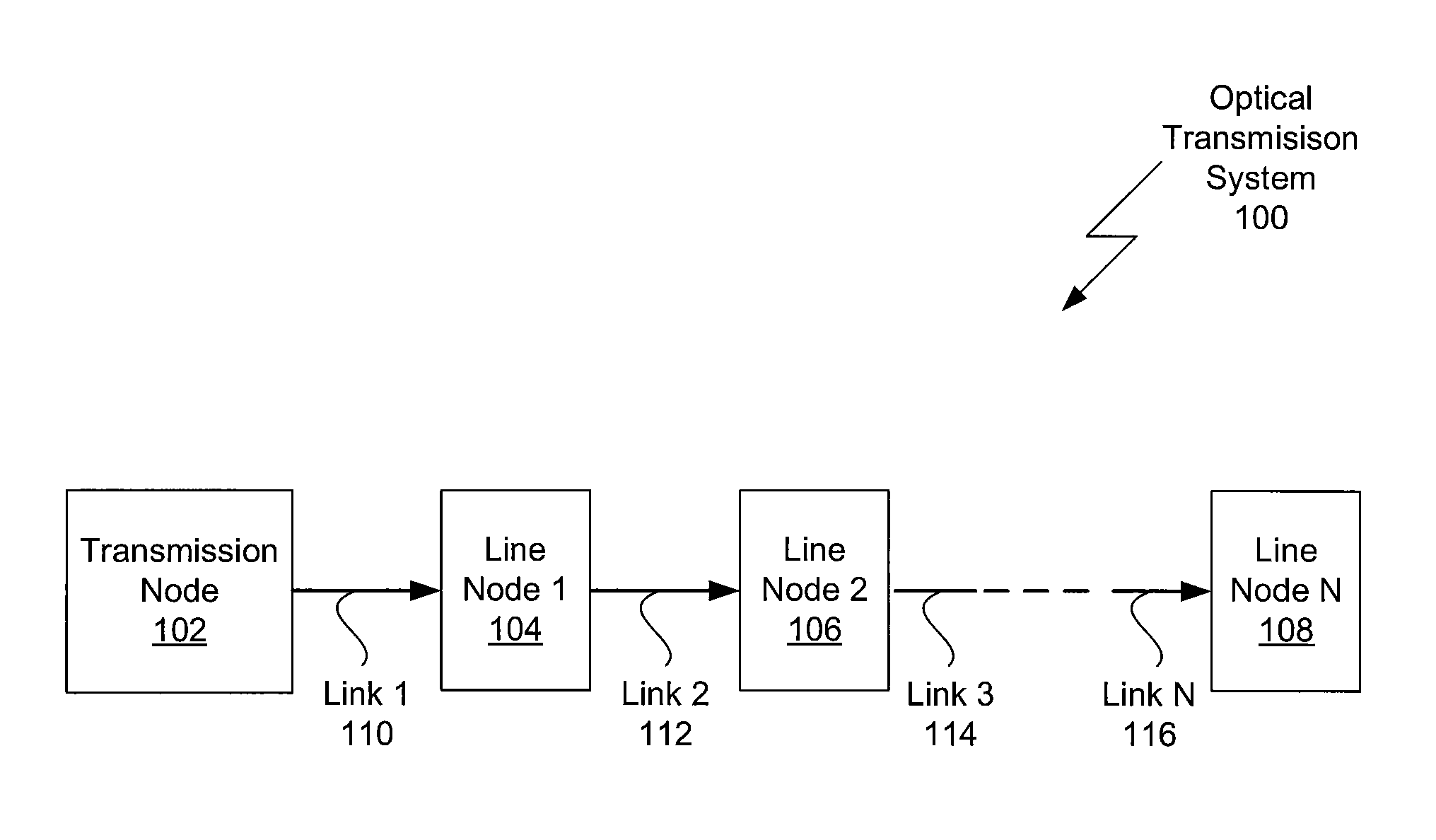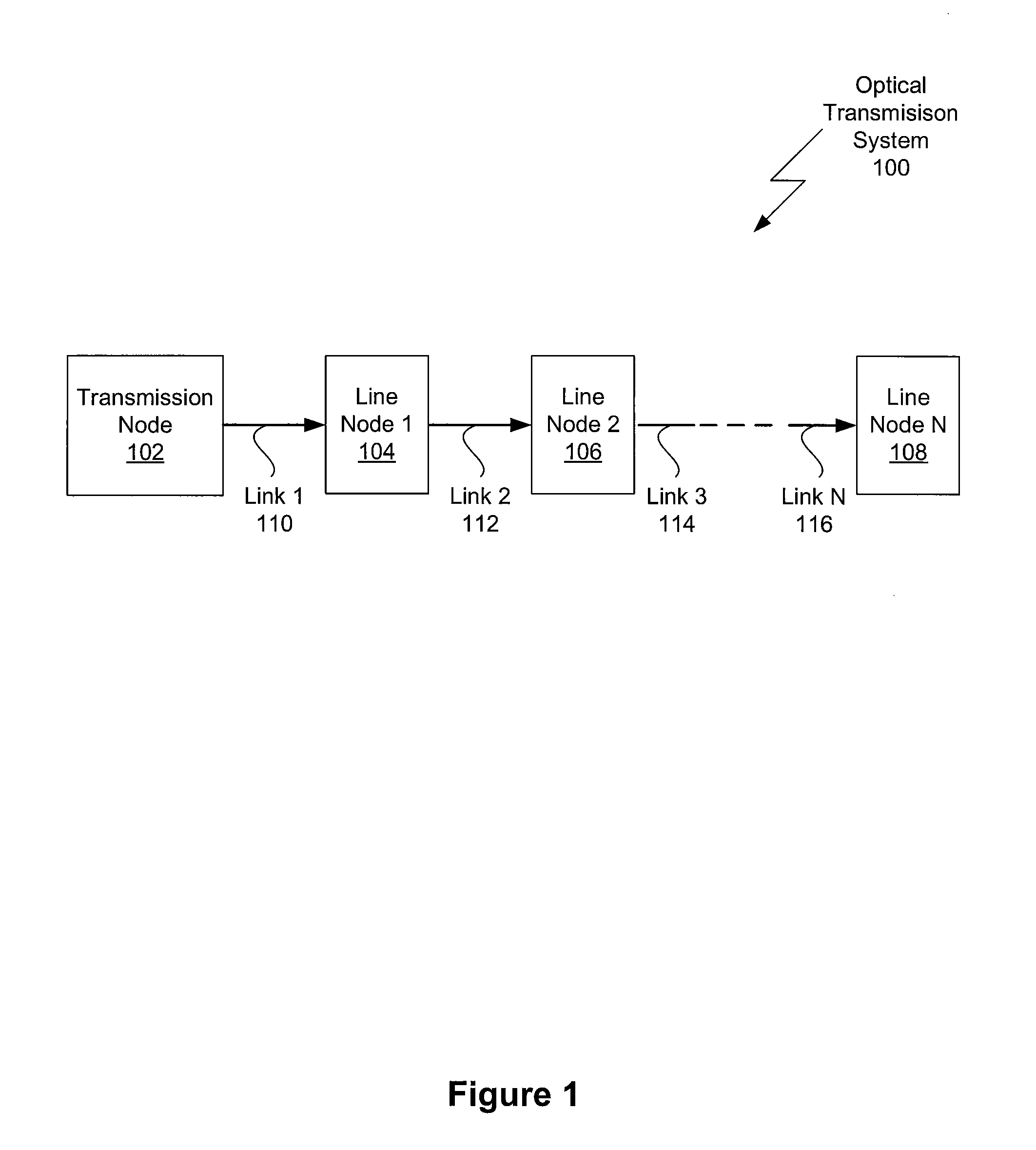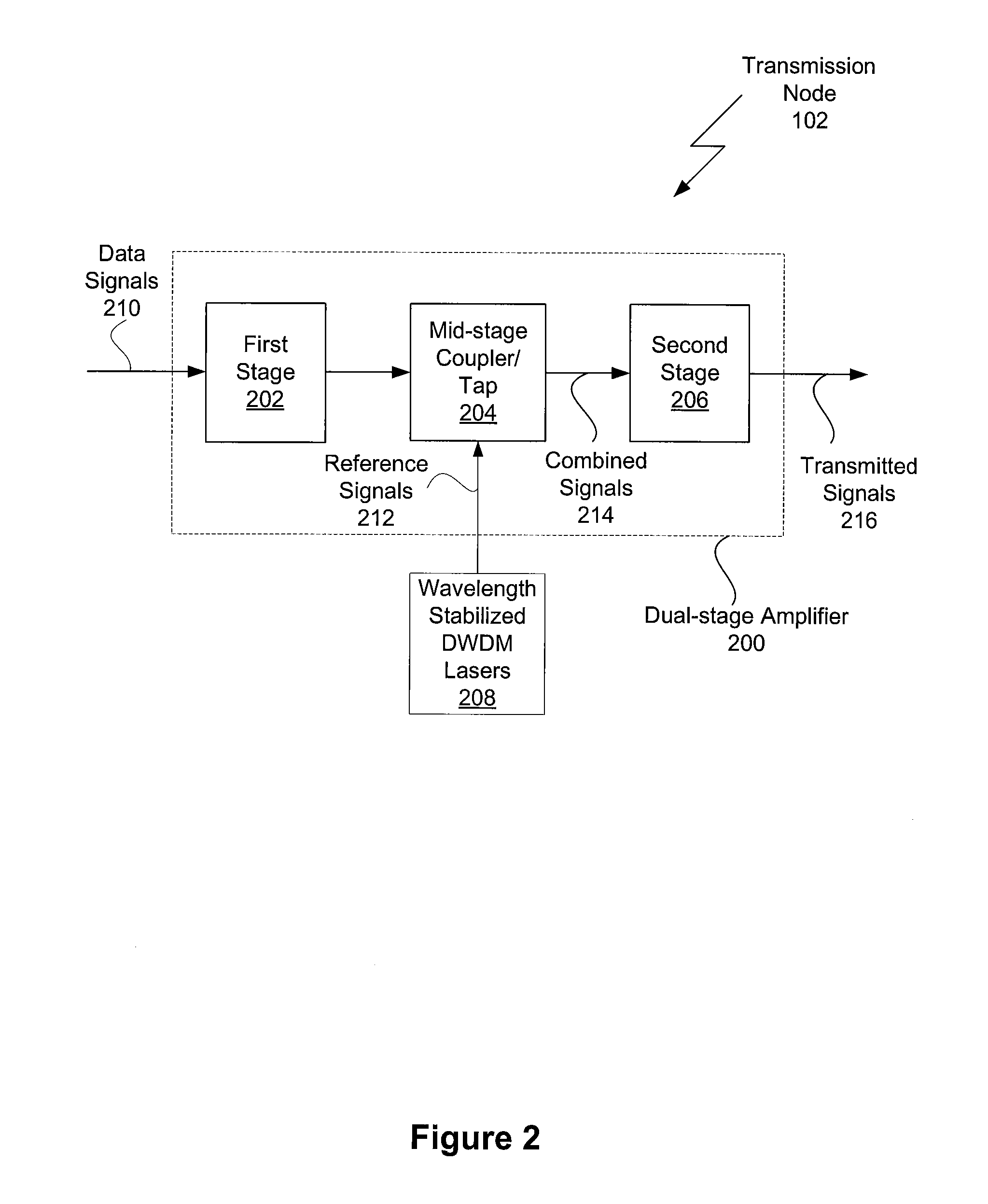System And Method For Tunable Chromatic Dispersion Compensation
a chromatic dispersion compensation and chromatic dispersion technology, applied in the field of fiber optic networks, can solve the problems of increased bit error rate, residual dispersion that is not corrected, and controlled wavelengths
- Summary
- Abstract
- Description
- Claims
- Application Information
AI Technical Summary
Benefits of technology
Problems solved by technology
Method used
Image
Examples
Embodiment Construction
[0017]FIG. 1 depicts an optical transmission system 100 in which one or more aspects of the invention may be implemented. As shown, the optical transmission system 100 includes, without limitation, a transmission node 102, a line node 1104, a line node 2106, and a line node N 108. The optical transmission system 100 also includes a link 1110 between the transmission node 102 and the line node 1104, a link 2112 between the line node 1104 and the line node 2106, a link 3114 between the line node 3106 and the next line node in the system, and a link N 116 between the next-to-last node in the system and the line node N 108. The transmission node 102 is a terminal node and is configured to generate and transmit optical signals through the link 1110 to the line node 1104. The line node 1104 is configured to receive the optical signals through the link 1110, regenerate these optical signals, and send these regenerated signals through the link 2112. The line node 2106 is configured to recei...
PUM
 Login to View More
Login to View More Abstract
Description
Claims
Application Information
 Login to View More
Login to View More - R&D
- Intellectual Property
- Life Sciences
- Materials
- Tech Scout
- Unparalleled Data Quality
- Higher Quality Content
- 60% Fewer Hallucinations
Browse by: Latest US Patents, China's latest patents, Technical Efficacy Thesaurus, Application Domain, Technology Topic, Popular Technical Reports.
© 2025 PatSnap. All rights reserved.Legal|Privacy policy|Modern Slavery Act Transparency Statement|Sitemap|About US| Contact US: help@patsnap.com



